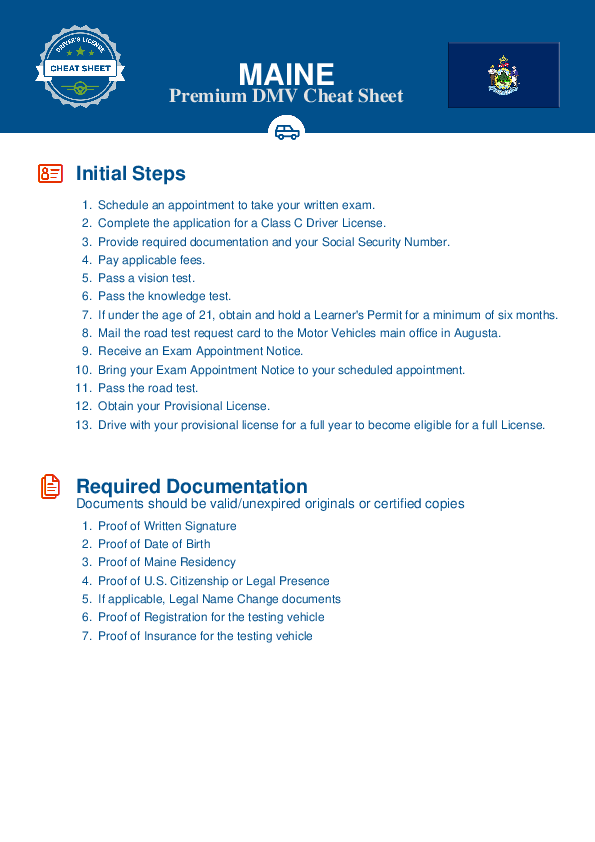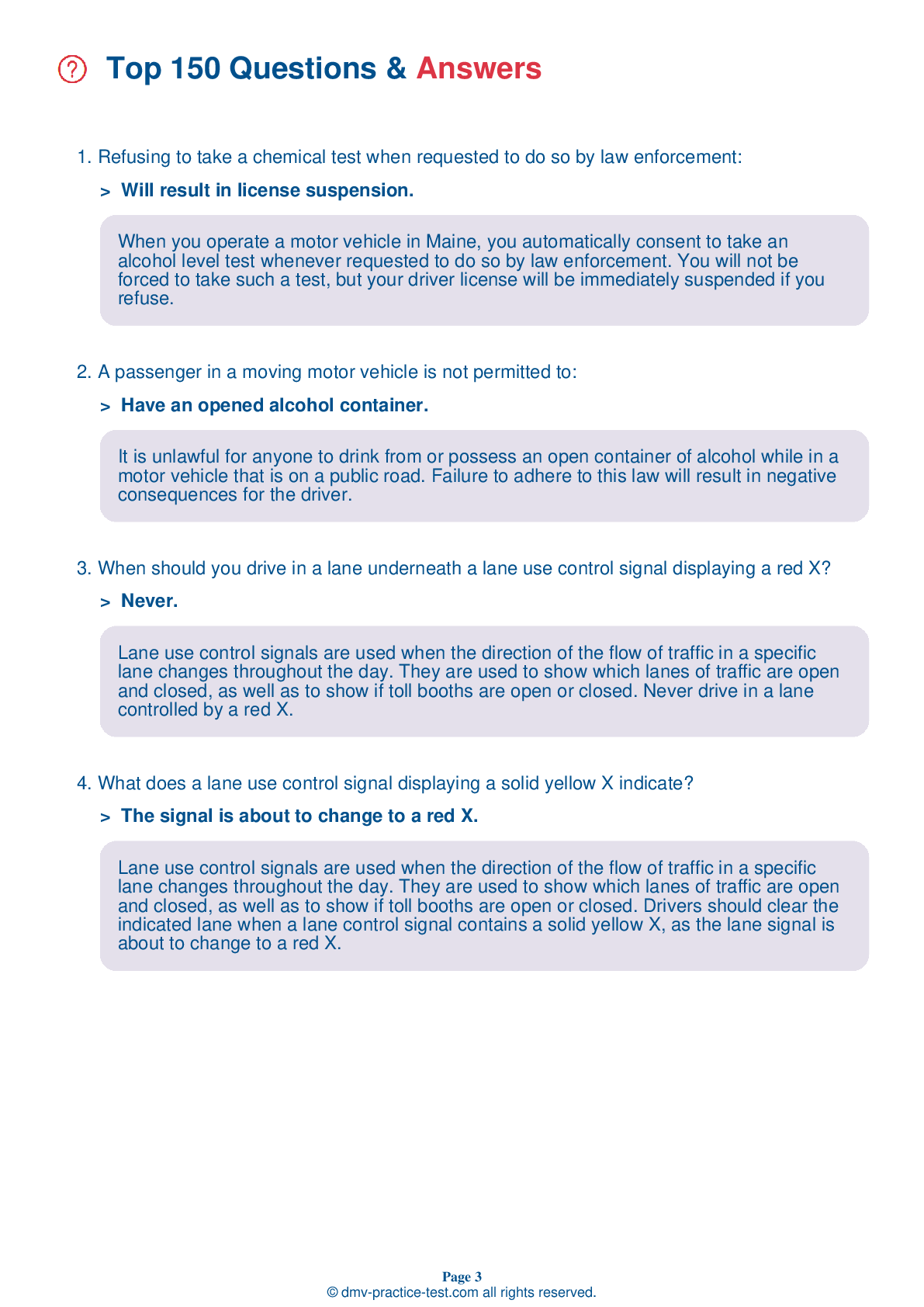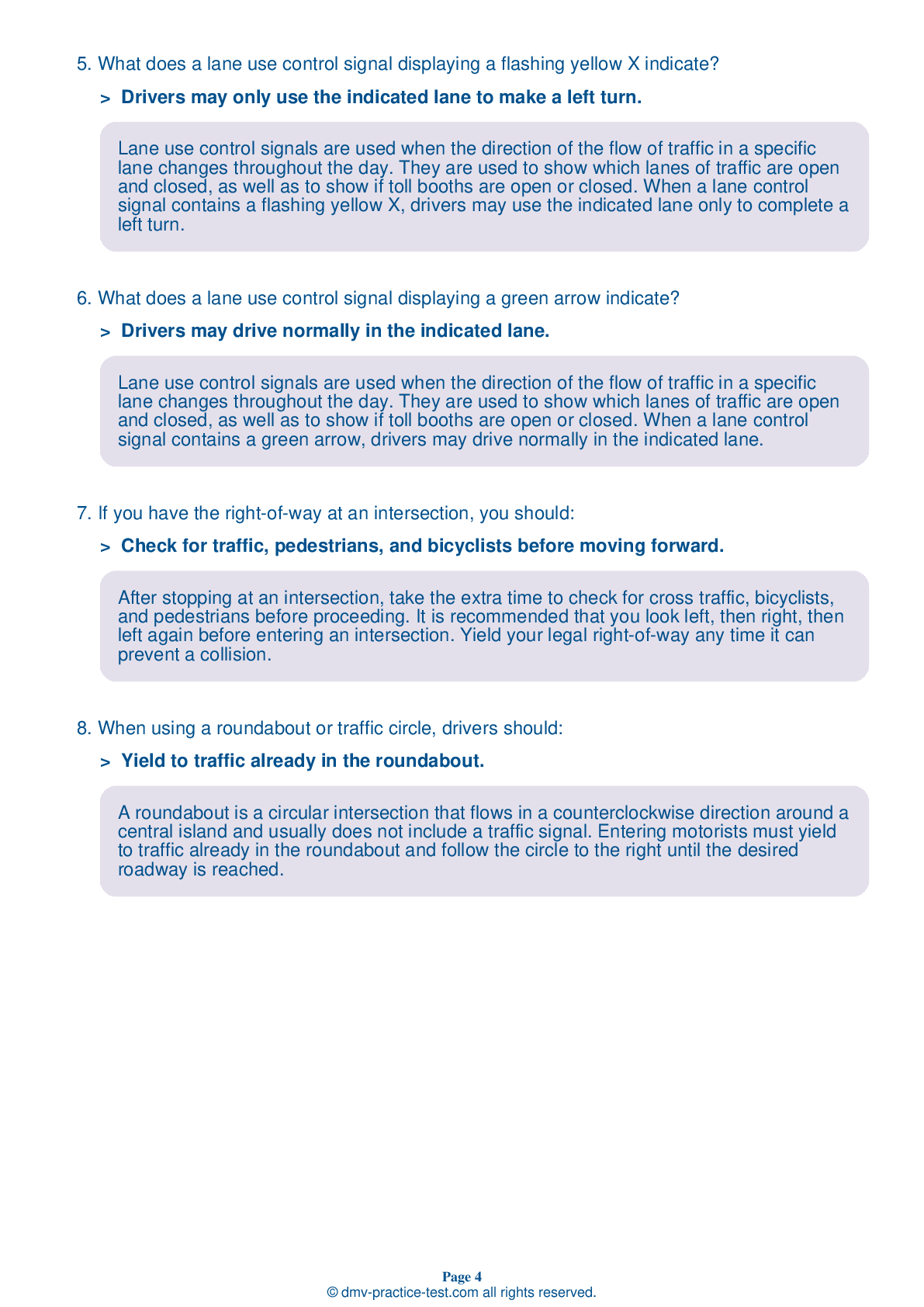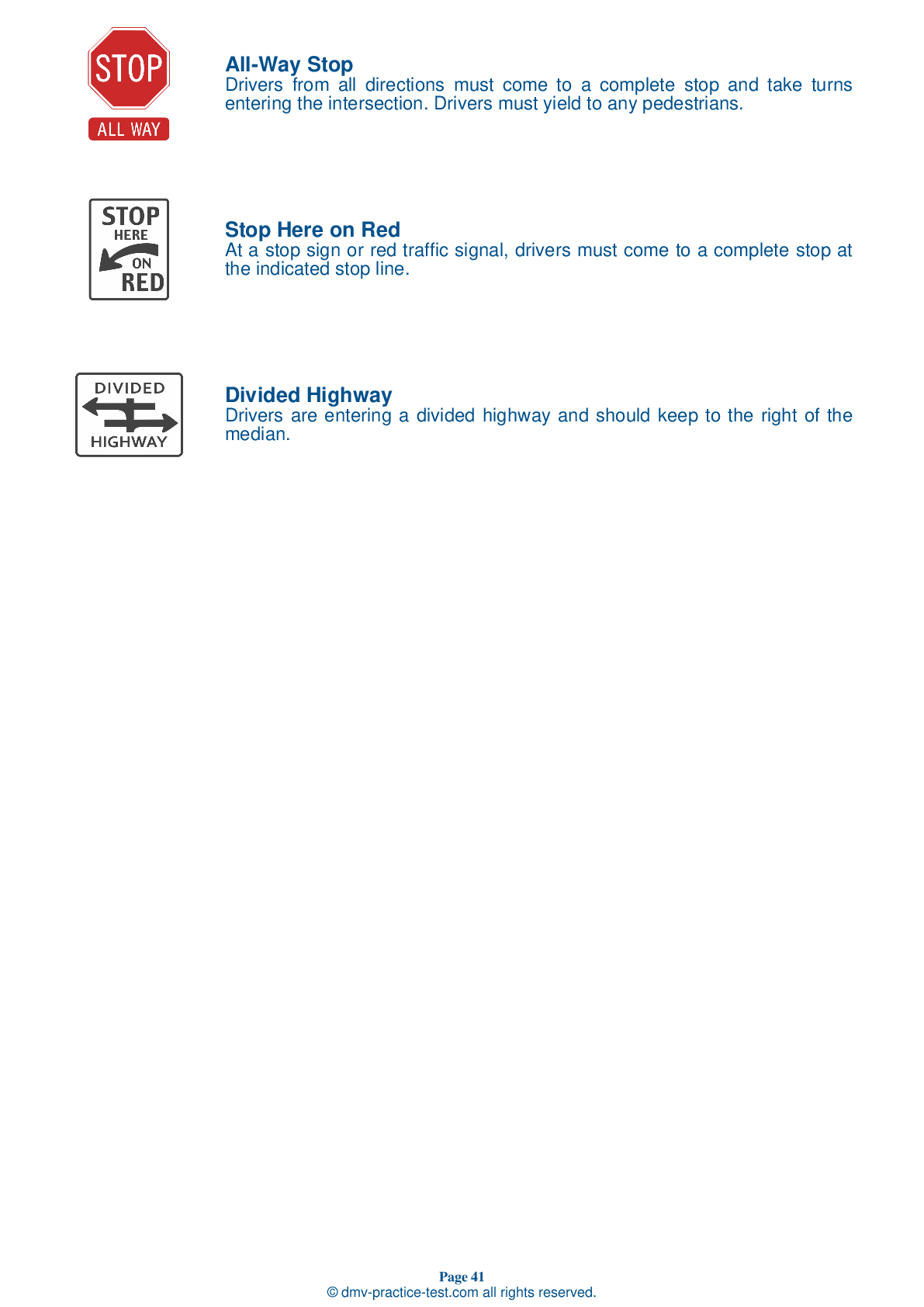FREE Maine DMV Practice Test #4 Page 6 of 7
For January 2025, Maine's DMV practise exams have been updated. It includes questions based on the most important traffic signals and legislation for 2025 from the Maine Driver Handbook. To study for the DMV driving permit test and driver's licence exam, use actual questions that are very similar (often identical!) to the DMV driving permit test and driver's licence exam.
Each question on the practise exam has a tip and explanation to help you recall the ideas. Questions about traffic rules, traffic signs, and driving statutes, as well as knowledge from the Driver Handbook, will be included in the written portion of the official Maine DMV test.
You must properly answer 50 of the 60 questions to receive a passing mark. To help you prepare for your Maine instruction permit or driver's licence, take our DMV practise test.
The DMV exam is offered in a variety of languages.
Using any form of testing help will result in an automatic fail, and the DMV may take further action against your driver's licence, so avoid it.
41 . A solid yellow line next to a broken yellow line means that vehicles:
Yellow lines separate lanes of traffic moving in opposite directions. A broken yellow line next to your driving lane means that you may pass.
42 . Highway pavement will be particularly treacherous and most slippery:
Pavement is particularly treacherous when it first begins to rain. Accumulations of dirt and oil mix with the rainwater, creating a greasy film on the roadway.
43 . If you must park your vehicle in an area not usually used for parking:
Drivers are responsible for making sure their vehicles do not become hazards after they have been parked. Wherever you park, make sure your car is visible to drivers approaching from any direction.
44 . When merging onto the freeway, you should be driving:
You should enter a freeway at or near the speed of traffic, unless the speed of traffic exceeds the legal speed limit.
45 . Broken yellow lines are used on streets and highways to:
Yellow lines separate traffic moving in opposite directions. Dashed lines on the pavement indicate that passing is permitted when safe.
46 . Increase your following distance when driving behind a large vehicle:
Drivers of trucks, buses, vans, and any vehicles pulling campers or trailers may not be able to see you if you are driving directly behind them. Increase your following distance when driving behind one of these vehicles. Additionally, large vehicles can block your view of the road, so increase your following distance to look around the sides of the vehicle and see the road ahead.
47 . This road sign means:
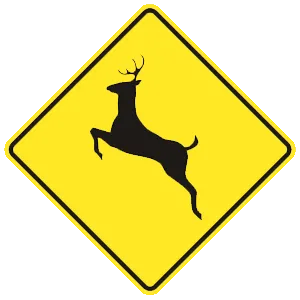
This sign warns that deer cross the roadway in the area. You should slow down, be alert, and be ready to stop.
48 . When driving under snowy or icy conditions, it is safe to use your cruise control as long as your speed is reduced.
You should not use cruise control when driving on snowy or icy roads. Your tires may lose contact with the road and you will no longer have control of your vehicle.
49 . If an approaching train is near enough or going fast enough to be a danger, you must:
You should look and listen for trains before crossing any railroad tracks. If an approaching train is near enough or going fast enough to be a danger, you cannot go across the tracks. This is true even if they have no signals or the signals are not working.
50 . Smoking and preparing to smoke while driving:
Smoking while driving can create dangerous distractions by causing you to take your hands off the wheel and/or your eyes off the road.
Need Car Insurance? No problem!
Compare the best rates in Maine and find a personalized policy that meets your needs.
1. Are You Currently insured ?
2. Married ?
3. Do you own your Home?
4. Do you have more than 1 car ?
5. Have you or a Family Member Honorably Served in U.S. Military ?
6. Your Name
7. Age
8. Zip code
IMPORTANT REMINDER:Auto Insurance is Mandatory to drive in Maine. Get covered before you hit the road to avoid any fines.
Ranked by best match
